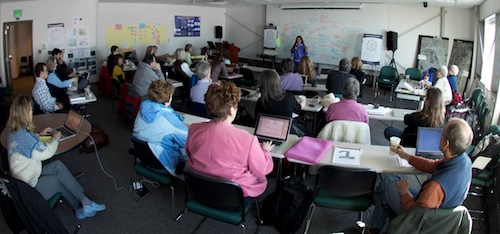
Introducing the Arctic Ocean Ecosystem Collection, a body of educational resources focused on understanding the Arctic Ocean ecosystem. The Collection was developed during a five-day workshop in Barrow, Alaska, in 2012. The workshop brought together teachers who had traveled to the Arctic Ocean during teacher-researcher experience programs; Arctic Ocean community members and teachers from the North Slope (Alaska); as well as project scientists interested in gaining expertise in broader impacts activities.
The Collection is centered around educational resources related to current marine and climate change research. The Collection includes individual activities, lesson plans, videos, and presentations all of which will educate the next generation about this complex ecosystem.
Update - New Curriculum Available!
In 2022, ARCUS was funded by the North Pacific Research Board to update a number of the lessons that were originally created for this collection. The resulting Arctic Ocean Curriculum Unit is available for downloading and classroom use.
More On The Workshop
The Arctic Ocean Professional Development Workshop, which led to creation of the collection, was funded and supported by the Arctic Research Consortium of the United States, the Center for Ocean Science Education Excellence Alaska, Alaska Ocean Observing System, the North Pacific Research Board, and the North Slope Borough School District.
To get a sense of the workshop and the outcomes, check out this three-minute video
